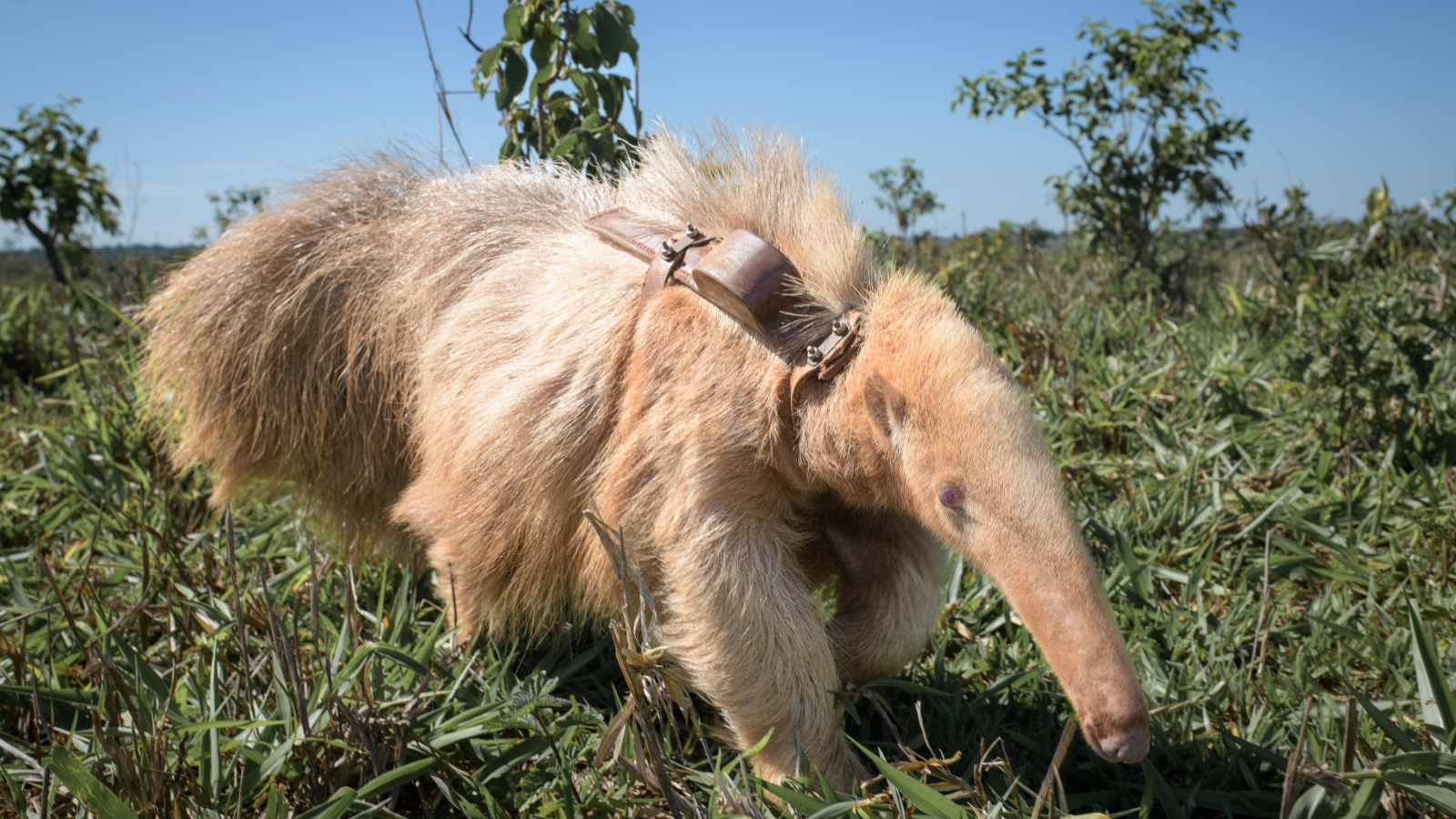
Conservationists have released new photos of the only known living albino giant anteater on Earth, who is now believed to be at least 1 year old.
Researchers from the Anteaters and Highways Project (AHP), a multi-year assessment of anteater-vehicle collisions set up by Brazil's Wild Animal Conservation Institute (ICAS), first discovered the anteater in December 2022 on a ranch in Brazil's Mato Grosso do Sul state. They named the unique animal Alvin.
Alvin was spotted clinging to his typically colored mother's back, a behavior seen in all young giant anteaters (Myrmecophaga tridactyla) below 10 months old. The team captured the snowy juvenile and fitted him with a GPS vest to track his future movements, AHP representatives wrote in a statement supplied to Live Science.
On May 10, AHP posted new images of Alvin on Facebook. The white anteater is now 4.9 feet (1.5 meters) long and weighs 31 pounds (14 kilograms), which suggests he is over 1 year old and not far from being fully grown, AHP representatives wrote on Facebook. Alvin was also given his second GPS vest after outgrowing his first one.
Albinism is a genetic condition that prevents animals from producing melanin, the pigment that gives color to their skin, fur, feathers, scales and eyes. As a result, individuals with albinism appear completely white and have pink eyes. Their eyes and skin are very sensitive to light, which can cause impaired vision and make individuals more susceptible to sunburn. Albinism is a recessive trait, meaning that both parents must carry a copy of the gene.
Related: Zoo anteater exposed people to rabies in first-of-its-kind case
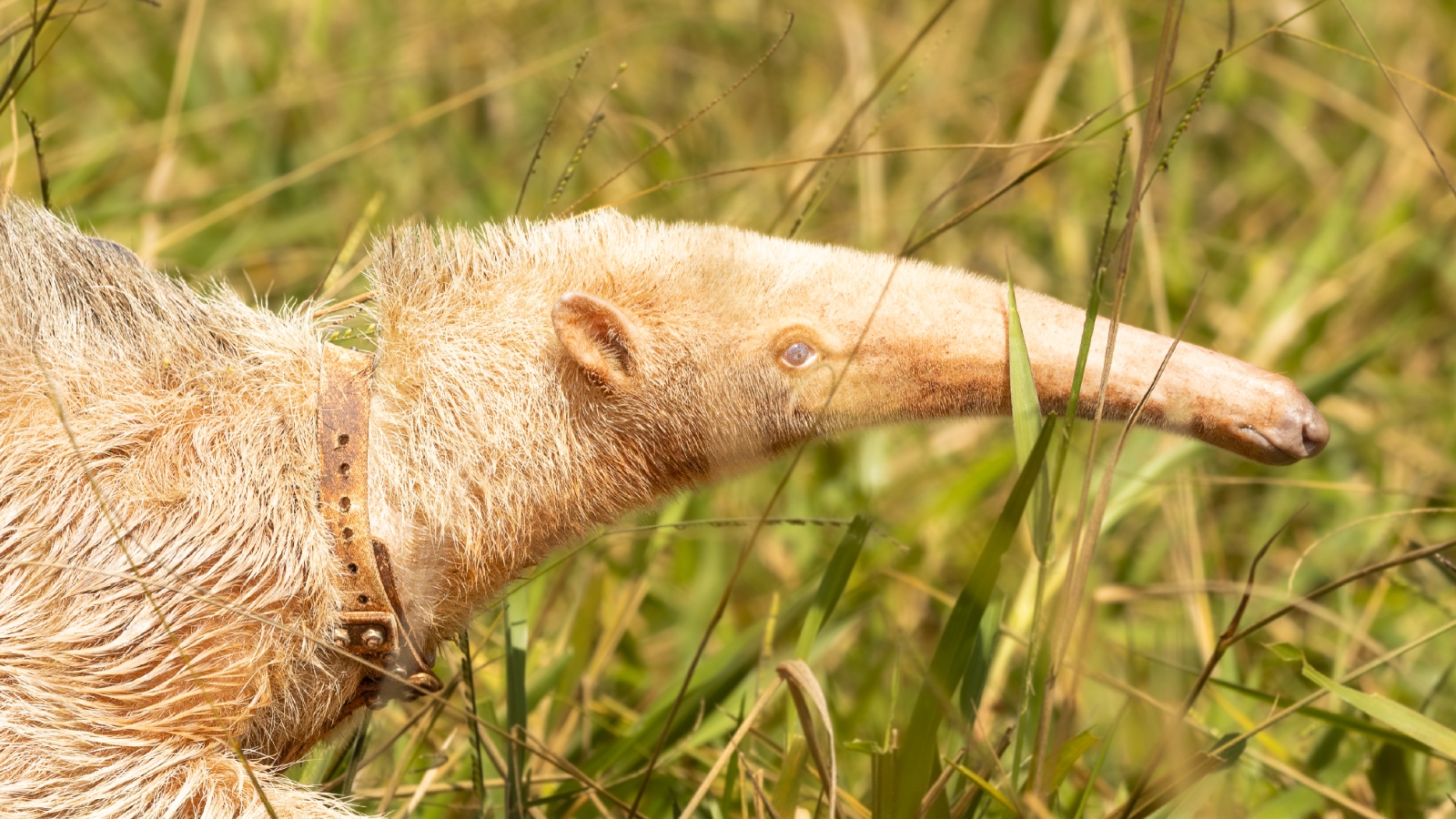
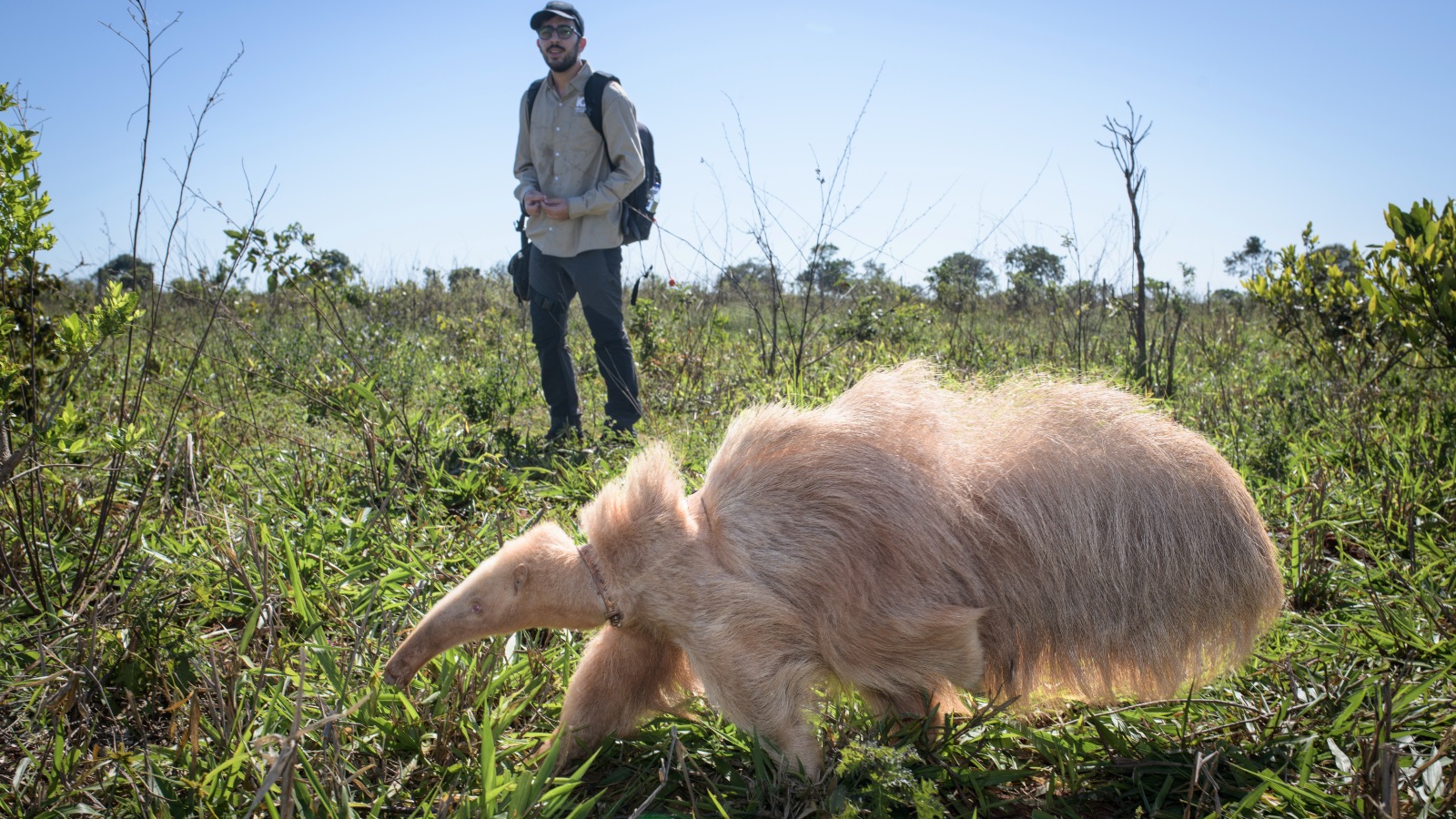
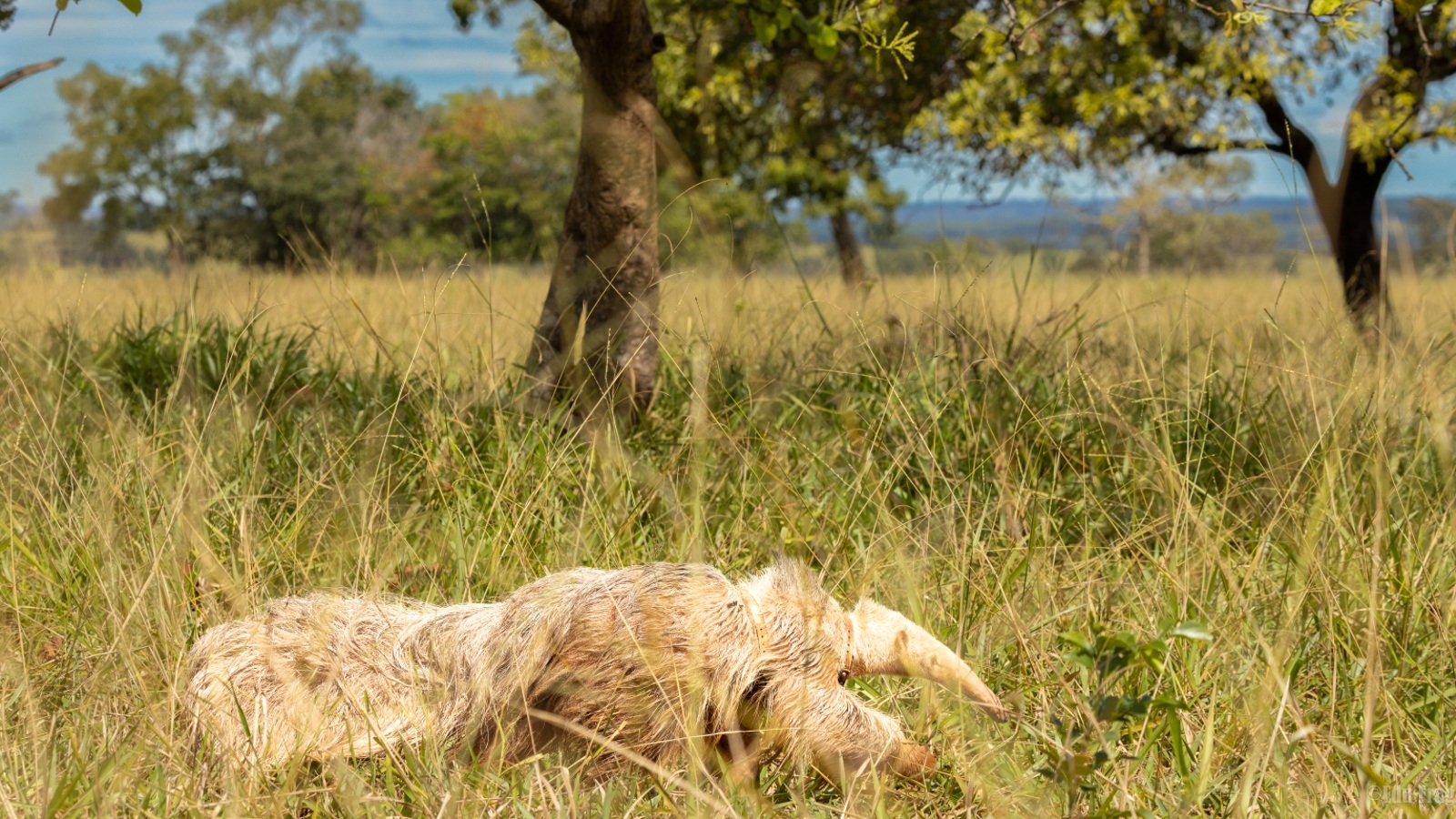
The main threat to most albino animals is a higher risk of predation because their discoloration often makes them stand out from their environment. And this seems to be the case with giant anteaters.
In August 2021, AHP researchers found the corpse of another juvenile male albino giant anteater, the first of its kind ever discovered, in the same area as Alvin. The body showed signs of predation.
"When we got there, he was already dead, but we were able to collect genetic samples that were sent to the lab for analysis," Dr. Débora Yogui, a veterinarian with the AHP team, said in the statement. By comparing the DNA collected from the first albino with Alvin's DNA, the team will be able to tell if the animals are related, she added.
If Alvin and the deceased albino are not directly related, it could suggest that the species gene pool has been decreased by inbreeding, which would explain why this rare condition has started appearing, AHP representatives wrote.
The researchers suspect that inbreeding is likely due to the destruction of the animals' natural habitat by human deforestation. Giant anteaters are currently listed as Vulnerable on the International Union for Conservation of Nature (IUCN) Red List.
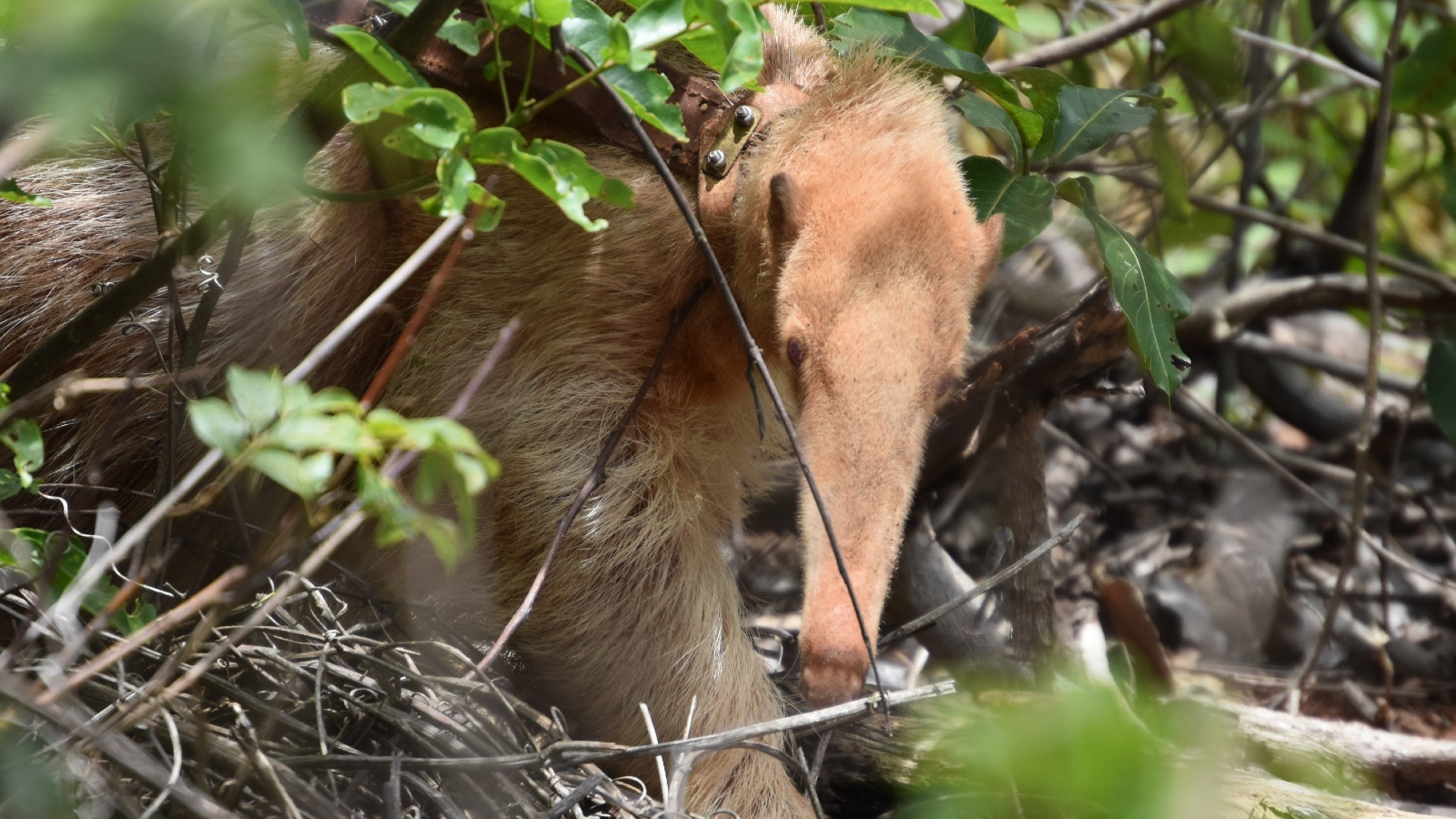
The team is also concerned that, even if Alvin survives future predation, he may be impacted by overexposure to sunlight. Anteaters try to spend the hottest hours of the day in the shade because the land-dwelling mammals are poorly suited to dealing with extreme heat. But deforestation has robbed anteaters of this much-needed shade, which poses a particular problem to Alvin because of his sensitive skin.
The AHP researchers will continue to track and monitor Alvin's progress as he gets older. But they also warned that they will not step in to save Alvin if he falls ill or is attacked by predators.
"Even though we know that it runs several risks, we cannot interfere in the life of this animal directly, because we would be influencing natural ecological processes," Nina Attias, a wildlife biologist with ICAS, said in the statement. "As conservationists, we know that this is not good for the species or the environment."







